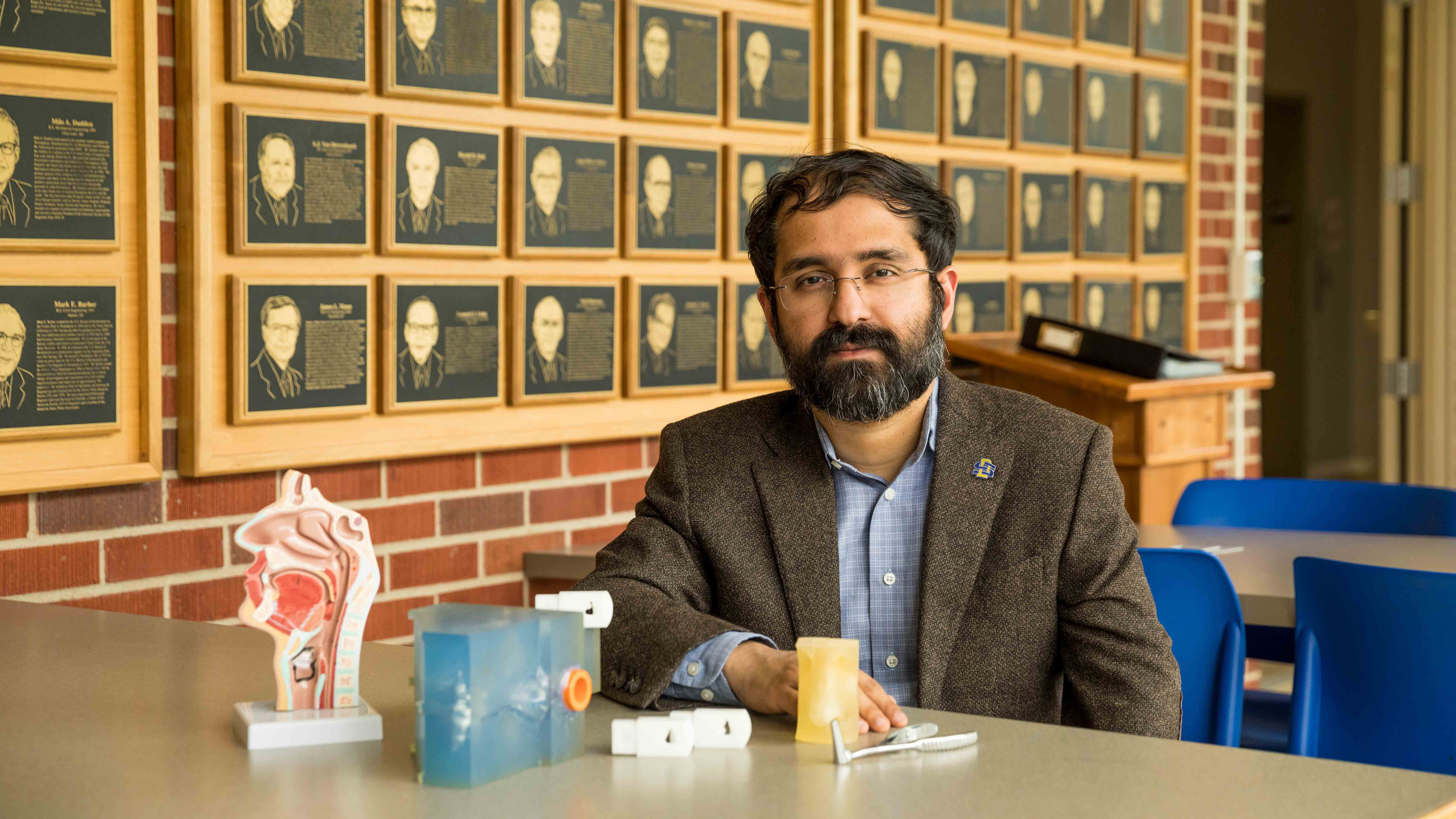“When the COVID-19 pandemic hit, scientists had to rely largely on airborne transmission data that was generated in the aftermath of the 1918 influenza pandemic”, said assistant mechanical engineering professor Saikat Basu. “We were entirely unprepared. We need to generate quantitative data and develop a multilevel modeling framework that will help scientists deal not only with this pandemic, but also with the next one.”
Basu used his expertise in fluid mechanics-based aerosol transport modeling in the human respiratory tract, as well as data from other research studies, to determine which droplet sizes are most likely to carry the novel coronavirus to the nasopharynx, which is the dominant initial infection site. Furthermore, he incorporated other COVID-19 data into the model to estimate the minimum number of virus particles needed to trigger the infection, known as the infectious dose.
“To my knowledge, this is the first paper to quantify the SARS-CoV-2 infectious dose,” Basu said. However, he admitted, “this is still an open challenge and will need backing from epidemiological data.”
Basu described the infectious dose as “a fundamental virological measure for any infection. It has bearing on how we design topical antiviral therapeutics and targeted intranasal vaccines. Also, global vaccination would take a while and we do need a more robust treatment regimen for those who are getting sick.”
Results are published in the current issue of Scientific Reports, an online peer-reviewed open-access Nature Research publication. “This is an interdisciplinary challenge that requires the talents of those working in areas such as fluid mechanics, virology and other areas of biomedical sciences,” Basu said, noting that this publication reaches out to that broad scientific community.
Basu’s research was part of a National Science Foundation-funded project to design a mask with a reusable respirator that captures and inactivates the novel coronavirus. In addition, he used startup funding from SDSU’s Department of Mechanical Engineering to do the computational fluid dynamics modeling.
Calculating droplet sizes
A University of North Carolina at Chapel Hill cell culture study showed that the nasopharynx, which is the upper part of the throat behind the nasal passages and is above the esophagus and voice box, serves as the “most accessible seeding zone”, Basu explained. Other studies, including one at Oxford University, have confirmed this fact.
“The mucous layer in the anterior nasal passages makes it more difficult for the virus to infect these cells,” Basu said. Furthermore, the ciliated epithelial cells that line the nasopharynx located behind the anterior nasal cavity have a surface receptor, known as ACE2, which the virus uses to enter the cells. The infection then spreads from this initial infection site into the lungs through aspiration of the virus-laden nasopharyngeal fluids.
To determine which droplet sizes are most likely to reach the nasopharynx, Basu developed CT-based digital models of the nasal airspace of two healthy adults and simulated four inhalation rates — 15, 30, 55 and 85 liters per minute.
“The 15-liter rate happens while sitting still and gently breathing and 30 would roughly correspond to your breathing rate while walking,” he explained. Forceful breathing will fall within the range of 50 to 75 liters per minute.
“When viral transmission is averaged over different breathing rates, droplets ranging from 2.5 to 19 microns in size do the best job of landing at the nasopharynx,” he noted. These droplets sizes were larger than anticipated.
Estimating infectious dose
Based on the reports related to the Skagit Valley choral group in which one person transmitted COVID-19 to 52 of the 61 choir members, Basu derived a conservative estimate of around 300 virus particles, or virions, as the threshold for infection, thereby quantifying the SARS-CoV-2 infectious dose.
“The fact that the number of virus particles needed to launch the infection is in the range of hundreds is very remarkable and shows how contagious this particular virus is,” Basu said. Typically, an inhaled viral infection, such as influenza A, requires 1,950 to 3,000 virions.
To estimate the probability that a droplet will contain at least one virion, Basu used a study on the amount of virus in the sputum and mucus of COVID-19 patients and then accounted for environment-induced dehydration.
A predicted one-third reduction in droplet size means the likelihood that a 10-micron droplet will contain at least one virion increases from 0.37% to 13.6%, he explained. For a 15-micron droplet, that probability increases to 45.8%. This happens because of the nonvolatile constituents in the virus-containing droplets. When the water part of the droplets evaporates, the concentration of virus particles in the droplets elevates significantly.
“The droplets being inhaled after dehydration in the external air carry a larger viral load,” Basu said. When the relative humidity drops, that triggers a higher rate of dehydration for the ejected respiratory droplets, which increases the chances of viral transmission.
The same model can also be potentially used to estimate the infectious dose of new COVID-19 variants, according to Basu. He would need to know the viral loading in the sputum of patients infected with the new variant and reported data from a superspreader event.
“It is important that people of our generation leave behind research that is useful for the next generation,” Basu concluded.


